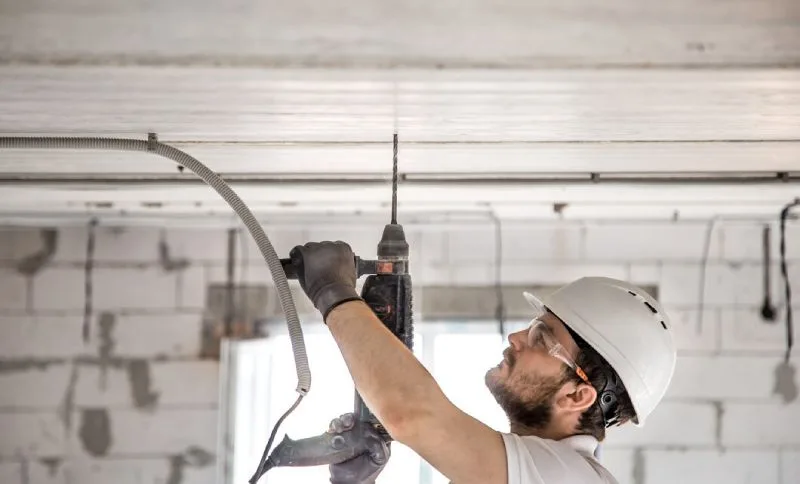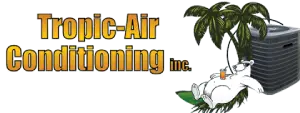Spray foam attic insulation is a game-changer in optimizing your home’s comfort and energy efficiency. This innovative insulation method seals every nook and cranny, providing unparalleled thermal protection. If you’re looking to stay cool in Florida’s scorching summer or cozy during occasional chilly nights, you’re in for a treat.
This article explores the ins and outs of spray foam attic insulation, uncovering its problems and disadvantages so you can weigh the advantages. We’ll help you make informed decisions about whether this attic insulation strategy suits your needs.
Problems and Disadvantages of Spray Foam Attic Insulation
Spray foam attic insulation offers many benefits. However, it’s not without its drawbacks. One common issue is that it may not be thick enough, leaving gaps and inadequate coverage. Contractors might miss air leakage sites during installation, diminishing its effectiveness.
Misapplications can result in insulation that contracts and pulls away from framing, causing potential roof damage. Some people report unpleasant odors associated with the curing process, and there can be concerns about mold and mildew if not properly installed and maintained. It is crucial to weigh the pros and cons before opting for this solution.
Spray Foam Isn’t Thick Enough
One common issue with spray foam attic insulation is when it isn’t thick enough. Inadequate thickness can lead to insulation gaps and reduced energy efficiency. To ensure your home enjoys the full benefits of spray foam attic insulation, the right thickness should be about 2 to 3 inches. However, you should consider these crucial factors when determining the right thickness:
- Climate Consideration — Tailor the thickness of your region’s climate. In Florida’s hot and humid weather, a thicker layer can help maintain indoor comfort, keeping your space cool when the sun blazes outside.
- R-Value Match — Align the insulation’s R-value with local energy efficiency recommendations. This step ensures your insulation meets the necessary thermal resistance levels.
- Budget Awareness — Balance the thickness with your budget. While thicker insulation often translates to better performance, it can come at a higher initial cost. Weigh this expense against the long-term energy savings to make an informed and cost-effective decision for your home.
Missed Air Leakage Sites
One common challenge with spray foam attic insulation is the oversight of missed air leakage sites. Inefficient insulation leaves gaps and allows uncontrolled airflow, impacting your home’s comfort and energy efficiency.
These unseen openings can be a source of heat loss in winter and heat gain in summer. It’s vital to have a professional inspect and address these leakage sites, ensuring a tightly sealed attic space. Don’t let these hidden culprits sabotage your home’s insulation – schedule a thorough assessment and patch up those air leakage sites to maintain a more comfortable and energy-efficient living environment.
Misapplication of Insulation
Another common error is improper installation, which compromises the insulation’s efficiency. This reduces insulation value, leaving your home vulnerable to temperature fluctuations and energy loss.
Misapplications can be observed in several key areas:
- Uneven Coverage — Insufficiently covering every nook and cranny allows heat transfer and air leakage. Uninsulated or poorly insulated areas create inefficiencies.
- Gaps Around Fixtures — Improper sealing around recessed lights, plumbing vents, or electrical fixtures can leave holes in the insulation, undermining your home’s thermal envelope.
- Inadequate Thickness — Failing to meet the required insulation thickness means the material might not provide the necessary thermal resistance, leading to poor energy efficiency.
To ensure your spray foam insulation is applied correctly, rely on experienced professionals who guarantee the even, thick, and consistent application needed for a well-insulated, energy-efficient attic space.
Contracts and Pulls Away From Framing
Contracting and pulling away from the framing is a common issue with attic insulation. Over time, insulation materials may shrink or contract, creating gaps that compromise your home’s energy efficiency.
Proper installation is crucial to prevent this problem, as well as regular maintenance and inspections to identify any areas where the insulation may be pulling away from the framing. Addressing these concerns promptly will help maintain the integrity of your insulation and keep your home comfortable and energy-efficient year-round.
Potential Roof Damage
Choosing the right insulation and ensuring proper installation is crucial to avoid these potential roof damage issues and protect your home’s integrity. Here are four common sources of roof damage to be mindful of:
- Moisture Accumulation — Improper insulation can trap moisture in your attic, leading to condensation and, eventually, roof rot and structural damage.
- Ice Dams — Inadequate insulation can cause ice dams, where melting snow refreezes at the roof’s edge, potentially leading to roof leaks and shingle damage.
- Overheating — Inadequate ventilation or insulation can cause your attic to overheat, damaging your roofing materials over time.
- Weight and Stress — Excess insulation weight can damage your roof structure, potentially causing sagging or structural damage.
Unpleasant Odors
Unpleasant odors can be an unexpected side effect of spray foam attic insulation. While these odors are usually temporary, ensuring proper ventilation during installation and allowing time for any initial scents to dissipate is essential.
- Curing Process — During the curing phase, spray foam releases chemical odors, which can linger for a short period.
- Improper Ventilation — Inadequate ventilation can trap odors in your home, exacerbating the issue.
- Contamination — If the spray foam is mishandled or contaminated during installation, it can emit foul odors that persist.
Mold and Mildew Concerns
Mold and mildew concerns are critical when it comes to attic insulation. Poor insulation practices can lead to moisture buildup and the development of these potentially harmful fungi. To avoid these concerns, investing in proper insulation installation, ventilation, and moisture control is crucial to keep your attic dry, comfortable, and mold-free.
- Moisture Accumulation — Inadequate insulation can trap moisture in your attic, providing an ideal environment for mold and mildew to thrive.
- Health Risks — Exposure to mold and mildew spores can lead to health issues, including allergies, respiratory problems, and more, making it essential to prevent their growth.
- Structural Damage — Over time, mold and mildew can damage the structure of your attic, affecting its integrity and your home’s overall well-being.
- Unpleasant Odors — The presence of mold and mildew often brings with it musty and unpleasant odors, affecting the comfort of your living space.
Environmental Impact
Traditional insulation materials can have adverse effects on the environment. For instance, fiberglass and foam board insulation are not eco-friendly due to their manufacturing processes and disposal issues.
The production and disposal of these materials can release harmful greenhouse gases and contribute to landfill waste. In contrast, environmentally responsible insulation options like recycled or natural materials can reduce your carbon footprint. Making the right choice for attic insulation is not only beneficial for your home but also for our planet.
Health Complications
Health complications can arise from improper spray foam attic insulation, emphasizing the importance of correct installation. Here are four potential health concerns:
- VOC Exposure — Volatile Organic Compounds (VOCs) released during improper installation can lead to respiratory issues and allergic reactions.
- Air Quality — Inadequate ventilation or sealing can trap contaminants, reducing indoor air quality and causing respiratory discomfort.
- Off-Gassing — Chemical emissions from spray foam attic insulation during curing can lead to headaches, irritation, and other health problems.
- Mold Growth — Insufficient insulation can create conditions favorable for mold and mildew growth, triggering respiratory problems and allergies.
The Downsides of Using Spray Foam Attic Insulation in Homes
While spray foam attic insulation offers numerous benefits, it’s essential to be aware of its downsides. Potential downsides include unpleasant odors during installation, concerns about health complications due to off-gassing and trapped contaminants, and the risk of mold growth in improperly ventilated spaces.
Mold Issues
Mold issues in attic insulation, especially with spray foam, can be a significant concern. Improper installation and ventilation can create a conducive environment for mold growth. To tackle these issues:
- Proper Installation — Ensure that spray foam is correctly installed to prevent air leaks and moisture infiltration.
- Adequate Ventilation — Implement proper attic ventilation systems to control humidity and prevent moisture buildup.
- Regular Inspection — Regularly inspect your attic for signs of mold and address any issues promptly to maintain a mold-free environment.
Foul Odors
Foul odors associated with spray foam attic insulation can be a concern during and after installation. These odors arise during the curing process as the insulation sets, and while they’re typically temporary, they can be bothersome.
Proper ventilation is key to dissipating these odors and ensuring indoor air quality remains comfortable. It’s important to note that these odors should subside over time, leaving you with the long-term benefits of a well-insulated and energy-efficient home.
Termite Damage Risks
Termite damage risks are a concern when considering spray foam attic insulation. To mitigate these risks, consider the following precautions:
- Regular Inspection — Routinely inspect your attic and home for signs of termite activity, such as mud tubes or damaged wood.
- Proper Sealing — Ensure that gaps and openings in your home are sealed correctly, preventing termites from gaining access through cracks.
- Termite Treatments — Consider preventive termite treatments in and around your home to create a barrier against potential infestations, reducing the risk of damage.
Over-Airtightness Concerns
Over-airtightness can be a concern when it comes to attic insulation, particularly in tightly sealed spaces. Periodically inspect your attic for signs of over-airtightness, such as excess humidity or poor indoor air quality, and make adjustments to maintain a comfortable and healthy living space.
- Balanced Ventilation — Ensure that your attic has balanced ventilation to prevent over-airtightness. This allows for a healthy exchange of air while maintaining energy efficiency.
- Professional Installation — Rely on experienced installers who can strike the right balance between sealing and ventilation to prevent over-airtightness.
Superior Alternatives to Using Spray Foam Attic Insulation
Spray foam attic insulation is not the only option available. Fiberglass Insulation offers cost-effective thermal protection. Cellulose insulation is made from recycled paper and offers good insulation performance. Wool insulation is resistant to fire and moisture, providing excellent thermal properties. Choose the insulation type that best suits your budget, climate, and specific insulation needs.
Alternative Insulation Materials
Exploring alternative insulation materials can be a sustainable and cost-effective choice for homeowners. These alternatives offer eco-conscious solutions for a more energy-efficient and comfortable home. Consider these three options:
- Cotton Insulation — Made from recycled denim, cotton insulation is eco-friendly and offers good thermal performance.
- Wool Insulation — Derived from sheep’s wool, this natural material provides excellent thermal and acoustic insulation and resistance to fire and moisture.
- Hemp Insulation — Hemp fibers create a renewable, sustainable insulation option with good thermal properties and moisture resistance.
Proper Installation Techniques
Proper installation techniques are paramount when it comes to attic insulation. This helps maximize your insulation’s effectiveness and ensures your home remains energy-efficient and comfortable.
- Air Sealing — Thoroughly seal gaps, cracks, and air leakage points in the attic to prevent heat transfer and maintain a tight thermal envelope.
- Consistent Thickness — Ensure insulation is applied uniformly to the recommended thickness to achieve the desired R-value and prevent uneven coverage.
- Vapor Barrier — Install a vapor barrier in cold climates to prevent moisture infiltration and condensation.
- Ventilation — Provide adequate attic ventilation to control humidity and prevent moisture buildup, enhancing insulation performance and preventing issues like mold and mildew.
Cost-Effective Solutions
Looking for cost-effective solutions to insulate your attic? You can opt for a budget-friendly DIY project or a professional insulation installation that ensures peace of mind, comfort, and quality service. Here are budget-friendly options:
- Professional Insulation — Expert HVAC contractors offer professional-grade attic insulation service, ensuring a safe and durable installation. Though this alternative solution can be expensive initially, it provides a cost-effective strategy in the long run, saving you costly repairs and replacements.
- DIY Insulation -— If you’re handy, consider a DIY insulation project to save on labor costs, though it’s crucial to follow safety guidelines and installation best practices for an effective outcome. These alternatives prove that insulating your attic need not be a costly endeavor.

Spray Foam Attic Insulation FAQs
Is there a downside to the spray foam attic insulation?
Yes, there can be downsides to spray foam attic insulation. Common concerns include unpleasant odors during and after installation, potential health issues due to off-gassing, and the risk of over-airtightness, which can affect indoor air quality. Additionally, improper installation of spray foam attic insulation can lead to issues like mold growth and, in some cases, roof damage.
What type of spray foam is best for attic?
Closed-cell spray foam is often the preferred choice for attic insulation. It provides a high R-value, acts as an air and vapor barrier, and is known for its structural strength. However, the best type can vary depending on your attic and climate.
Can you install spray foam insulation in the attic?
Yes, spray foam insulation can be installed in the attic. It’s a popular choice due to its efficiency and ability to seal air leaks effectively. However, professional installation is crucial to avoid issues like over-airtightness and ensure the insulation performs optimally.
What are the pros and cons of spray foam insulation in the attic?
Pros of spray foam attic insulation include excellent thermal performance, air sealing, and reduced energy bills. However, there are cons, including potential odors during installation, health concerns related to off-gassing, the need for proper ventilation, and the risk of misapplication if not installed correctly.
How long does spray foam last in attic?
Spray foam attic insulation can have a long lifespan, often lasting 20 to 30 years or more when properly installed and maintained. However, factors like climate conditions, exposure to UV radiation, and the quality of the spray foam attic installation can influence its durability. Regular inspections and maintenance can help extend its lifespan.
Conclusion
It’s crucial to weigh the pros and cons of spray foam attic insulation. Its advantages, such as outstanding thermal performance and air sealing, can significantly improve your home’s comfort and energy efficiency. To make an informed decision, it’s best to consult with professionals. If you’re considering spray foam attic insulation in Florida, don’t hesitate to contact us. Our experts can help ensure you achieve the optimal insulation solution for your home.




